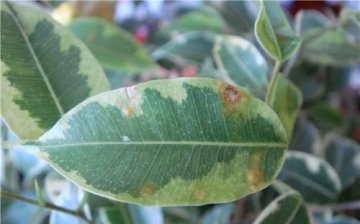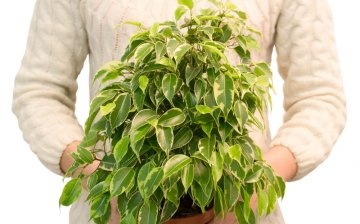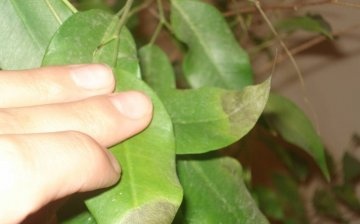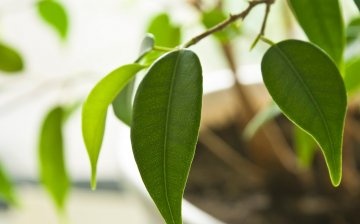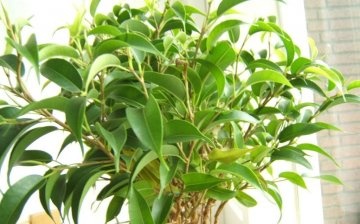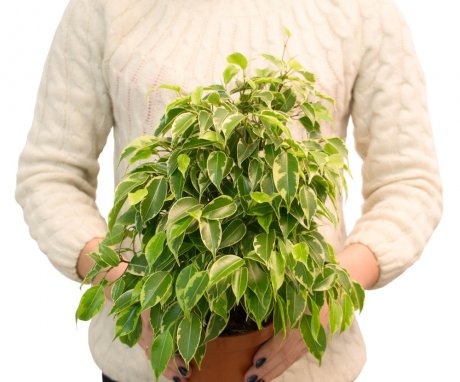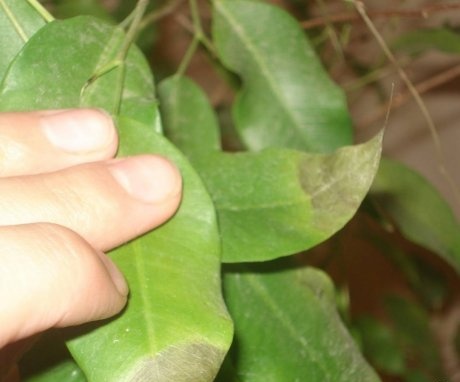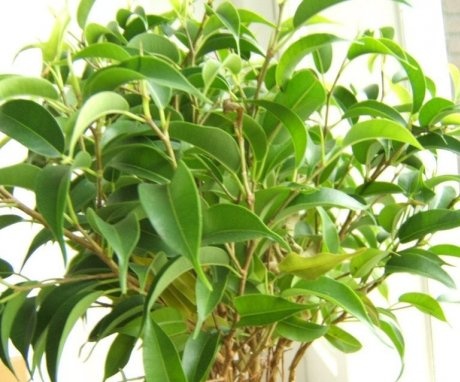The most common diseases of ficus Benjamin
Ficus Benjamin was named after a British botanist who created a guide to flowering plants and described many species of ficus. This plant comes from southeast Asian countries with a tropical climate. In the wild, the plant is represented by a rather large tree up to 30 meters, with a spreading crown covered with narrow oval fleshy leaves.
Ficus Benjamin attracted the attention of botanists with its beautiful appearance and work began on its selection. As a result of the labors, decorative flower varieties appeared, having more modest sizes and the ability to grow in indoor conditions.
Content:
- What is Benjamin's ficus
- What leads to improper flower care
- What a plant can hurt and how to treat it
- How to avoid growing problems
What is Benjamin's ficus
Ficus Benjamin is loved for its decorative effect and few people know that this plant has bactericidal properties and is able to cleanse the air of pathogens.
This plant has a huge varietal variety with leaves of different colors and sizes. With proper care, an ornamental leafy plant can grow up to two meters. Due to intensive growth ficus needs support, but you can not install it, but beautifully weave several shoots into one trunk. The flower can be formed by both a tree and a bush.
The most popular in indoor floriculture are the following varieties of Benjamin's ficus:
- "Natasha" is a bushy plant with dense branches covered with small oval green leaves. The size of the leaves does not exceed three centimeters, but this does not reduce the decorative qualities of the flower. The leaf plate has a clear depression in the center and a pointed tip.
- "Anastasia" is a plant with larger leaves of moderately variegated colors. Glossy leaf plates have wavy edges and lighter veins that stand out against a dark green background.
- "Daniel" is a fast-growing variety with dark saturated glossy foliage. Quite a lush plant, the leaves of which grow up to eight centimeters and have smooth edges.
- "Kinki" is a variegated bush with small delicate leaves, which grows up to forty centimeters and has a spherical shape. Green leaves are outlined along the edge with pale green or white edges.
- "Mix" is a large variety of ficus with green glossy foliage. It reaches a height of two meters and needs to be shaped by pruning.
- "Twilight" - grows up to one and a half meters and has an interesting color of foliage, which combines green and white spots spreading over the surface of the leaf plate.
Whichever variety attracts the attention of the grower, the ficus needs proper full care. Otherwise, the plant will lose its decorative effect and will soon die.
What leads to improper flower care
It is necessary to care for Benjamin's ficus competently, taking into account his tropical preferences. To do this, you need to fulfill a number of conditions:
- correctly place the flower in the house
- water and spray in a timely manner
- observe the temperature regime
- feed
- form a crown
If you do not properly follow the rules of care, then the ficus will begin to wither and become not a decoration of the house, but a headache for its inhabitants. There are some of the most common growing problems:
- yellowing and spotting of leaves is a clear sign of a lack of light
- rapid fall of foliage - insufficient and irregular irrigation
- the appearance of dark spots on the leaves indicates excessive watering
- ficus foliage acquires brown tones and falls off - this indicates non-observance of the temperature regime or susceptibility to drafts
- if the plant has a stunted underdeveloped appearance: weak and with small leaves, then you should pay attention to feeding and add mineral fertilizers.
It is quite difficult to restore the health of a plant, and in some cases it is not possible. If maintenance errors are noticed in the early stages, then the plant can be saved by recreating the natural habitat and eliminating the causes of the ailment. But if the conditions are maintained, and the plant withers, then infectious diseases or harmful insects may be the cause.
What a plant can hurt and how to treat it
With improper care, namely from excess moisture, Benjamin's ficus can become covered with growths that are concentrated on the inside of the leaf plate - these are symptoms of dropsy. The plant can be saved by recreating favorable conditions, but the affected leaves will have to be removed, because they cannot be treated.
But ailments associated with improper care are not the only ones that the plant suffers from. Ficus can often affect infectious fungal diseases, which are very difficult to treat:
- Anthracnose develops as a result of damage by imperfect fungi. Signs of the disease are the formation of dark brown spots on the leaves, which develop into ulcerative formations. If you do not take drastic measures, the plant will soon die. During treatment, they get rid of all the affected foliage, and then carry out the treatment fungicidal preparations... Processing is carried out in several stages, according to the instructions. Throughout the entire period of treatment, you should often ventilate the room without creating drafts, limit watering and refrain from spraying.
- Gray mold is also a fungal infection. The first symptoms are the appearance of a grayish coating on the leaves, similar to mold. Over time, plaque spreads throughout the plant and suffocates it. The first step is to wash the plant with soapy water and remove the damaged parts. ficus... Then carry out the treatment with special preparations and keep it isolated from other plants. Treatments should be carried out until the disease completely recedes, otherwise it will soon return and destroy the weakened plant.
- Root rot is caused by fungal attack on the roots. The impetus for the disease is excessive soil moisture. Signs of root rot are yellowing and wilting of leaves, which rapidly begin to darken and fall off. It is possible to cure a flower only in the early stages of the disease by "surgical intervention". The ficus should be carefully removed from the pot and carefully examine the roots, if they are all dark and soft, then it will not be possible to save the plant, and if most of the roots are white, then a cure is possible. All darkened and damaged roots should be cut off, and part of the crown with signs of ailment is also pruned. Moreover, the percentage of removed surface and underground parts should be approximately equal. After that, the plant is planted in a prepared disinfected soil.
- There are also diseases that are bactericidal in nature and cannot be treated. They are expressed in ugly growths and blisters on the leaf plates, as well as in various tumors on the stem of the plant.In case of illness, the plant must be isolated and treated with insecticides. And if there is no improvement, then the ficus should be destroyed.
How to avoid growing problems
To avoid trouble when growing a plant, you need to properly care for it:
- Watering should be carried out regularly and not very abundantly, avoiding stagnation of moisture and drying out of the earthy coma. You also need to periodically spray the plant with warm water.
- The location must be chosen so that Benjamin's ficus is not exposed to drafts and direct sunlight. There should be a lot of light, otherwise the plant will lose its decorative effect. In winter, an additional lighting.
- The temperature should be kept at 22-26 degrees in summer, and 15-18 degrees in winter will be sufficient.
If you adhere to the recommendations of experienced gardeners and pay enough attention to the flower, then Benjamin's ficus will delight with its beauty and decorate any interior. In addition, this plant does not lose its decorative effect in winter and will delight the eye all year round.
More information can be found in the video:



